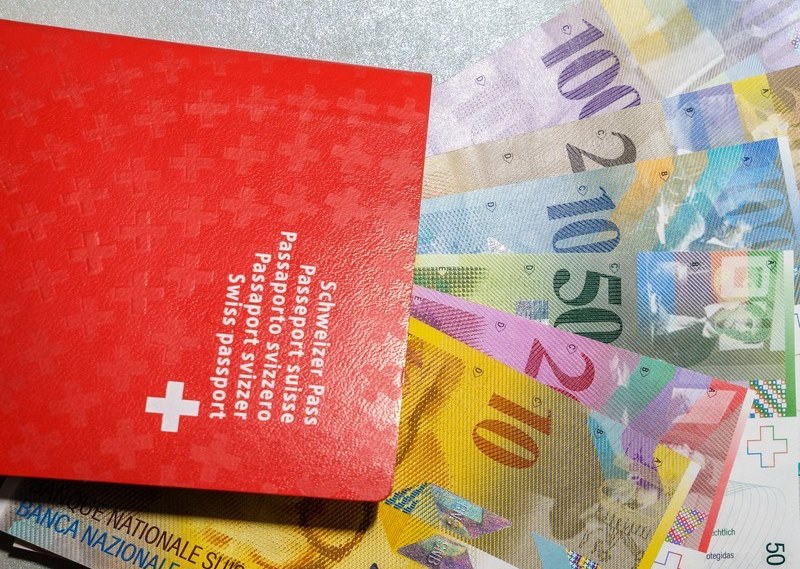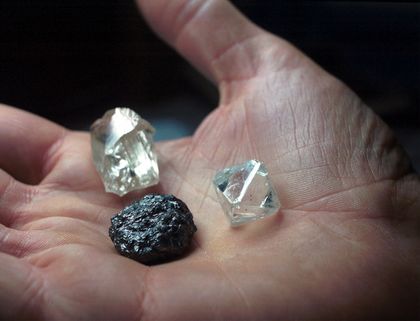Despite the efforts of global regulators, the diamond market, one of the oldest commodity markets in the world, is still controlled by a limited number of companies, one of which, South Africa’s De Beers, can be considered a monopoly.
The global diamond market was evaluated at more than $15bn in 2007. De Beers has controlled more than half of it for nearly 50 years.
As much as 45% of De Beers belongs to Anglo American, the world’s third largest diversified mining company in terms of production, which mainly produces metal ores.
De Beers now accounts for some 60% of diamond production (Russia’s Alrosa, the second largest diamond producer in the world, accounts for about 25%) and 43% of sales. There are no legal grounds for accusing De Beers or Anglo American of monopolising the market, possibly because no country controls the diamond market (see Table below).
When Alrosa was established in the early 1990s, the global diamond market was divided among players and had a clear-cut structure.
Apart from De Beers, other large players were Anglo-Australian diversified concerns BHP Billiton and RioTinto, for which the mining of diamonds was not a core business. RioTinto is the world’s second largest producer of iron ore, but has recently been increasing its presence on the aluminium market.Market players are now discussing the possibility of Rio Tinto’s merger with Canadian aluminium corporation Alcan.
In 2001, De Beers and Alrosa planned to sign a five-year agreement under which the South African company would buy about 25% of Alrosa’s rough diamonds, worth $800mn, annually. But in 2005 the European Commission ruled that the practices of De Beers may have violated EC Treaty rules on abuse of dominant market positions (Article 82) in the member states of the World Trade Organisation and the European Union.
The two companies revised their relations to take into account the requirements of the EU’s regulatory agencies. Alrosa’s sales limit was set at $600mn in 2006, $500mn in 2007, $400mn in 2008, and $275mn from 2009.
In February 2006, Neelie Kroes, the European Commissioner for Competition, demanded that De Beers stop its monopoly purchases of Russian diamonds in 2009. She said about the decision of the European Commission: “For the first time in the history of the diamond market, there is an opportunity for genuine competition. De Beers’ longrunning primacy can now effectively be challenged by its biggest competitor, Alrosa.” De Beers announced a 6% reduction in its purchases of rough diamonds owing to a decline in supplies from Russia and decreased demand on the market.
The company forecast that 2007 sales would be limited by supply and issued an official statement saying that the sale of rough diamonds in 2006 went down to $6.14bn compared with $6.54bn the year before.
According to its sales and marketing arm, Diamond Trading Company, De Beers’ 2007 sales will be limited by the anti-trust agreement with the EU on the sale of Russian diamonds.
Alrosa appealed against the European Commission’s decision in the European Court, which cancelled it on July 12, 2007.
In February 2007, the Russian company reshuffled its top management. Its new president, Sergei Vybornov, said in his first interview that the suit against the European Commission could be withdrawn.
“I don’t understand why we need it,” he said. “Why are we suing the European Commission? To get back the contract with De Beers? But now that export quotas have been cancelled, we should focus on marketing.” However, the company did not revoke the suit, although Alrosa actually hinted at its readiness to compete with De Beers on the global market, exactly as Neelie Kroes and the European Commission had wanted.
Russian diamond monopolist Alrosa, which accounts for 25% of global diamond production, plans to sell $2.898bn of rough diamonds in 2007, almost the same amount as in the previous two years.
One of its latest press releases says that the 2007 outlook includes sales of cut diamonds worth $157mn.
A major player on the global diamond market, Alrosa can not merely adapt to existing rules, but also propose new ones.
Therefore, it is considering ways to strengthen its positions on foreignmarkets, establishing dealerships at prominent diamond floors, as well as moving the international diamond trade to Russia.
“In my opinion, it would be best to set up a trading floor in Moscow to sell the bulk of diamonds,” said the company’s president. “When I say Moscow, I mean Russia. We may establish a trading floor in Yakutia, where diamonds are produced.
Alrosa’s foreign offices will monitor price tendencies, with the bulk of diamonds sold in Moscow, mainly under long-term contracts. The number of permanent clients will be limited, as we will keep only large clients whose policies are clear to us and who can really support the market.” Vybornov also said licences for the Ebelyakh and Ruchei Gusiny deposits could be auctioned in Yakutia in 2008.
The estimated reserves of these placer gold deposits are worth about $2bn, as production costs are low and revenues are high. Pre-production preparations take about six months there.
Other promising projects in Yakutia are the Upper Muna deposit and Maiskoye, which has recently been discovered at the Nakynskoye ore field.













